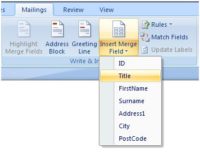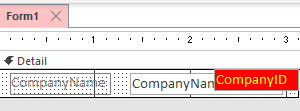Constraints that are created by SSMA or by user via SSMS tend to have ugly names. Worse, auto-generated names are not stable across backups. Meaning if you restore a new database based on a copy of another database, the constraint names will change. That create huge problems during migrations because scripts that references constraint will…
Access NZ() function to SQL Server equivalent
What is the SQL Server equivalent to Access NZ() function? Access SQL NZ([Event Timestamp]) SQL Server Equivalent COALESCE([Event Timestamp],0) ISNULL([Event Timestamp],0) * do not confuse this with the Access isnull() function.
Microsoft Access 2003 Language Reference [Access 2003 VBA Language Reference]
This reference contains conceptual overviews, programming tasks, samples, and references to guide you in developing solutions based on Microsoft Access. The reference contains the following sections: What’s New: Provides a list of new members by object and in alphabetical order. Concepts: Provides important concepts for developing custom Access solutions. Reference: Provides reference materials for the Access…
Access 2003 Technical Articles
In this section of the MSDN Library, you’ll find technical articles that demonstrate how to build and deploy complex Access 2003 runtime-based solutions, automate Access from another application; use the new XML features in Access 2003, and even how you can animate Access 2003. You can use the TOC to your left to navigate through…
Using Microsoft Access Data in a Mail Merge
Suppose you have an Access Database containing the names and addresses of your customers. Every now and again you may want or need to send a standard letter to each customer who has opted in to such mailings. However, you are aware that these letters are going to look so much better, and work so…
Use controls, not fields
Sometimes we need to use fields from a RecordSource that aren’t shown on the form. It is legal to reference them directly even if they don’t have a control. For example, we can have a form bound to a RecordSource like so: SELECT c.CompanyID, c.CompanyName FROM Companies; And only display CompanyName in a textbox but…
Designing a lookup table with logic
It is very common for us to embed some kind of logic based on a lookup table or in some cases, a column of a table. Because we have application logic connected to it, the code are fragile and subject to changes as the requirements develops. We want to avoid this situation where we might…
Fixes or workarounds for recent issues in Access
Access crashes and slow performance Error: “Automatic configuration of the current version of Microsoft Access has failed.” occurs when you try to start Microsoft Access after updating to Version 1802 [FIXED] ISSUE You may get the following error when start Access after updating to Monthly Channel Version 1802 (Build 9029.2167 or higher): “Automatic configuration of…




